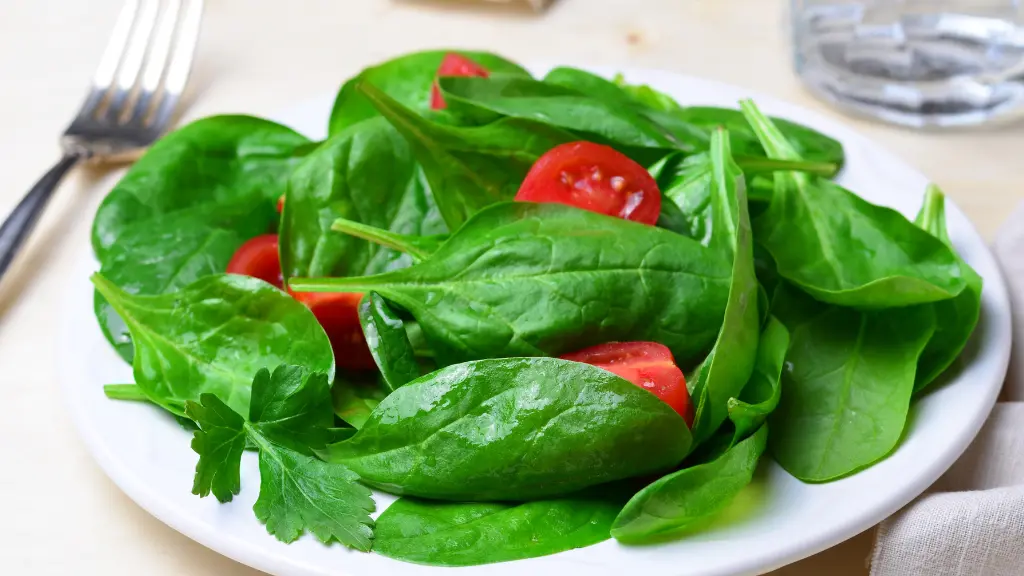Cooking vegetables can change their nutritional value. For tomatoes and spinach, cooking alters some nutrients while enhancing others.
Understanding these changes can help you make informed choices about including them in your diet.
You May Also Like: Do I Carry a Dangerous Amount of Belly Fat?
1. Tomatoes: Raw vs. Cooked
Tomatoes are rich in lycopene, vitamin C, potassium, and antioxidants. Cooking significantly affects these nutrients.
Lycopene Boost from Cooking
Lycopene, a powerful antioxidant in tomatoes, is better absorbed after cooking. Heat breaks down cell walls, releasing more lycopene. Research shows cooked tomatoes can have up to 35% more bioavailable lycopene than raw.
Vitamin C Loss
While cooking increases lycopene, it reduces vitamin C levels. This is because vitamin C is heat-sensitive and degrades at high temperatures.
Mineral Retention
Minerals like potassium and magnesium are unaffected by heat. Whether raw or cooked, tomatoes remain a good source of these essential minerals.
2. Spinach: Raw vs. Cooked
Spinach is a nutrient-dense leafy green rich in vitamins A, C, and K, as well as iron and calcium. Cooking spinach changes its nutrient profile, often for the better.
Improved Iron and Calcium Absorption
Spinach contains oxalates, compounds that bind to minerals like iron and calcium, making them harder for your body to absorb. Cooking reduces oxalates, improving the bioavailability of these minerals.
Vitamin Loss
Vitamin C and folate, both sensitive to heat, decrease when spinach is cooked. However, the loss is often outweighed by the increased availability of other nutrients.
Antioxidant Boost
Cooking spinach enhances certain antioxidants, such as beta-carotene. These antioxidants support skin health and immune function.
3. Cooking Methods Matter
The way you cook tomatoes and spinach greatly affects their nutrient profiles.
Best Methods for Tomatoes
- Roasting or Stewing: These methods maximize lycopene while preserving most other nutrients.
- Minimal Boiling: Overboiling can leach water-soluble nutrients like vitamin C.
Best Methods for Spinach
- Steaming: This method reduces oxalates without significant nutrient loss.
- Sautéing: A quick sauté in olive oil boosts absorption of fat-soluble vitamins like A and K.
Avoid prolonged boiling for both vegetables, as it can lead to nutrient loss.
4. Combining Tomatoes and Spinach
Cooking these vegetables together can enhance their health benefits. For example:
- Tomato-Based Spinach Dishes: Lycopene from tomatoes pairs well with the iron in spinach, especially when cooked with a bit of healthy fat.
- Soups and Stews: Combining these ingredients in soups can create nutrient-rich, delicious meals.
5. Nutrient Comparisons: Raw vs. Cooked
Here’s a quick breakdown of how cooking affects key nutrients in tomatoes and spinach:
| Nutrient | Tomatoes (Raw) | Tomatoes (Cooked) | Spinach (Raw) | Spinach (Cooked) |
|---|---|---|---|---|
| Lycopene | Moderate | High | N/A | N/A |
| Vitamin C | High | Low | High | Moderate |
| Iron | Moderate | Moderate | Low | High |
| Calcium | Moderate | Moderate | Low | High |
| Beta-Carotene | Low | Moderate | Low | High |
6. Health Benefits of Cooking
Tomatoes
Cooked tomatoes have enhanced cancer-fighting properties due to increased lycopene. This antioxidant protects against heart disease and certain cancers, particularly prostate cancer.
Spinach
Cooked spinach improves bone health and prevents anemia due to better absorption of calcium and iron. Enhanced beta-carotene supports eye health and immunity.
7. When Should You Eat Them Raw?
While cooking boosts some nutrients, raw tomatoes and spinach retain more vitamin C and folate. Eating raw vegetables is ideal for dishes like salads or smoothies where minimal processing is required.
8. Balancing Raw and Cooked
For optimal health, include both raw and cooked vegetables in your diet.
- Raw Spinach: Great for salads, wraps, and smoothies.
- Raw Tomatoes: Perfect for fresh salsas and side dishes.
- Cooked Dishes: Use tomatoes in sauces and spinach in soups or sautés to unlock their full nutrient potential.
9. Common Myths
Myth: Cooking destroys all nutrients.
Truth: Cooking reduces some vitamins but enhances others, making it a beneficial process overall.
Myth: Raw vegetables are always healthier.
Truth: Some nutrients become more bioavailable after cooking, making cooked vegetables equally valuable.
10. Tips for Cooking Tomatoes and Spinach
- Use minimal water when boiling to prevent nutrient loss.
- Pair vegetables with healthy fats like olive oil for better absorption of fat-soluble vitamins.
- Cook at moderate temperatures to retain maximum nutrients.
Conclusion
Cooking tomatoes and spinach does alter their nutrients, but not all changes are negative. Heat boosts antioxidants like lycopene and beta-carotene, making these vegetables even healthier in certain forms.
By understanding how cooking methods affect their nutritional value, you can maximize the health benefits of these versatile ingredients. Balance raw and cooked options for a diet rich in nutrients and flavor.











[…] You May Also Like: Does Cooking Boost Nutrients in Tomatoes and Spinach? […]